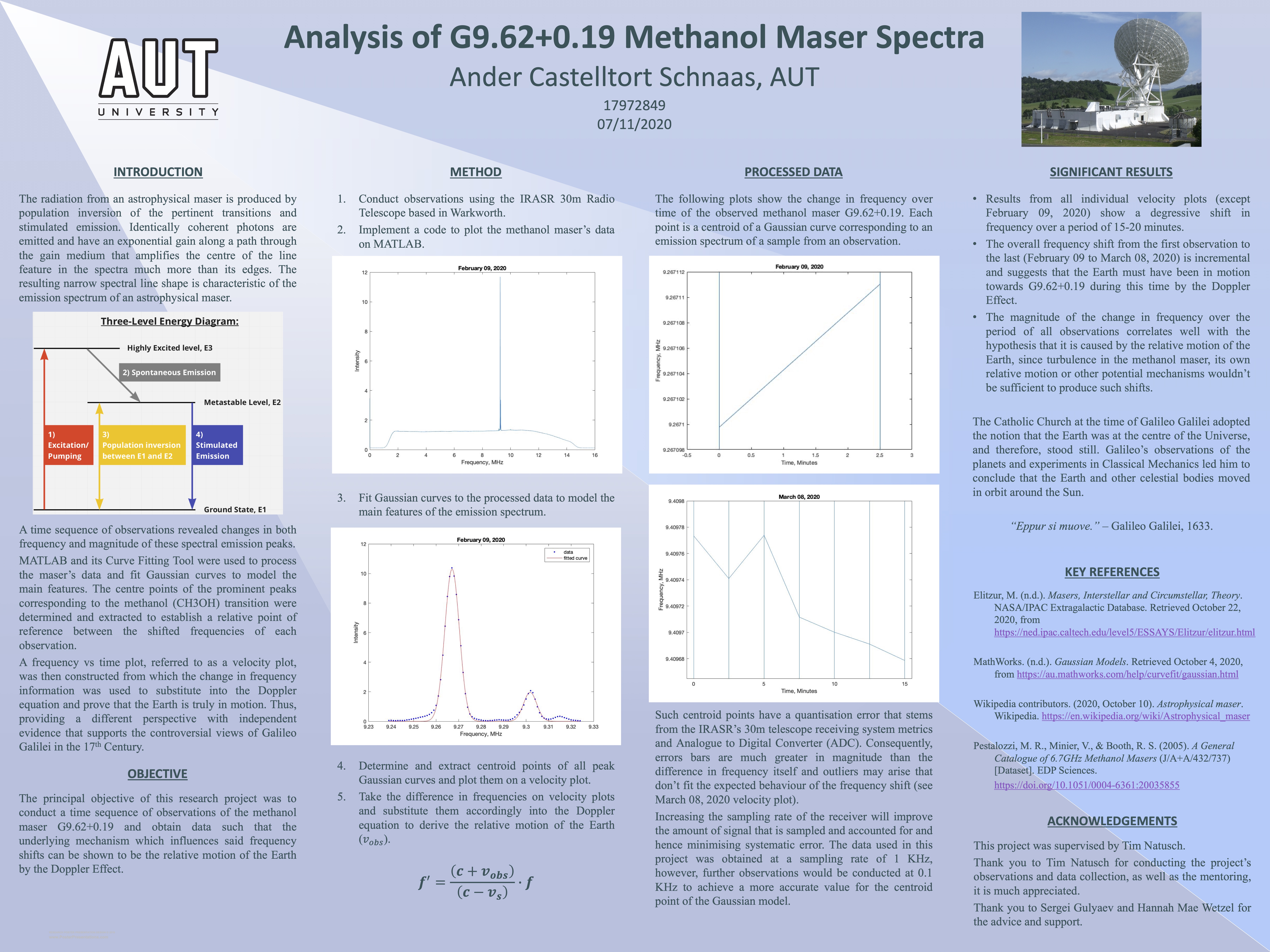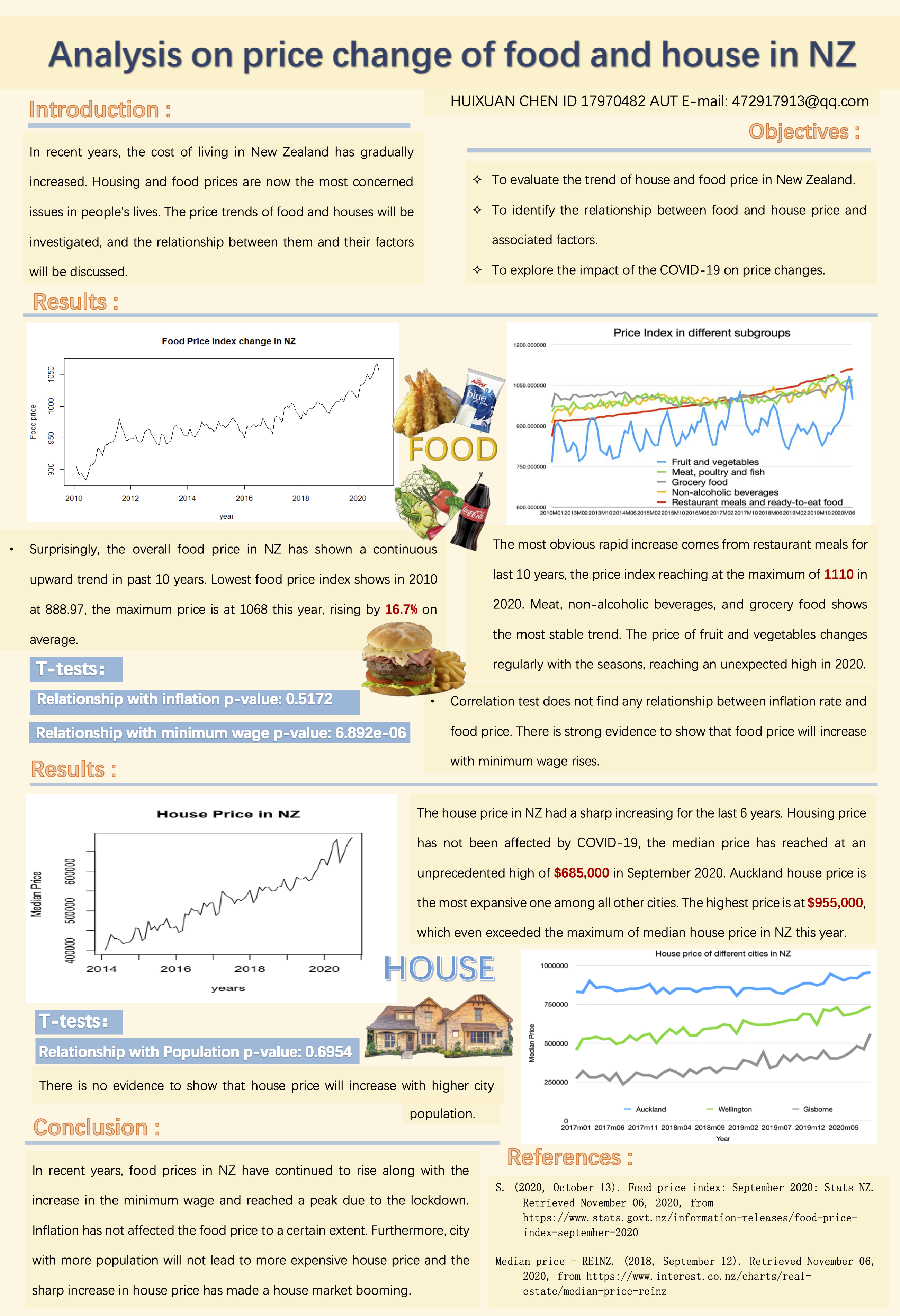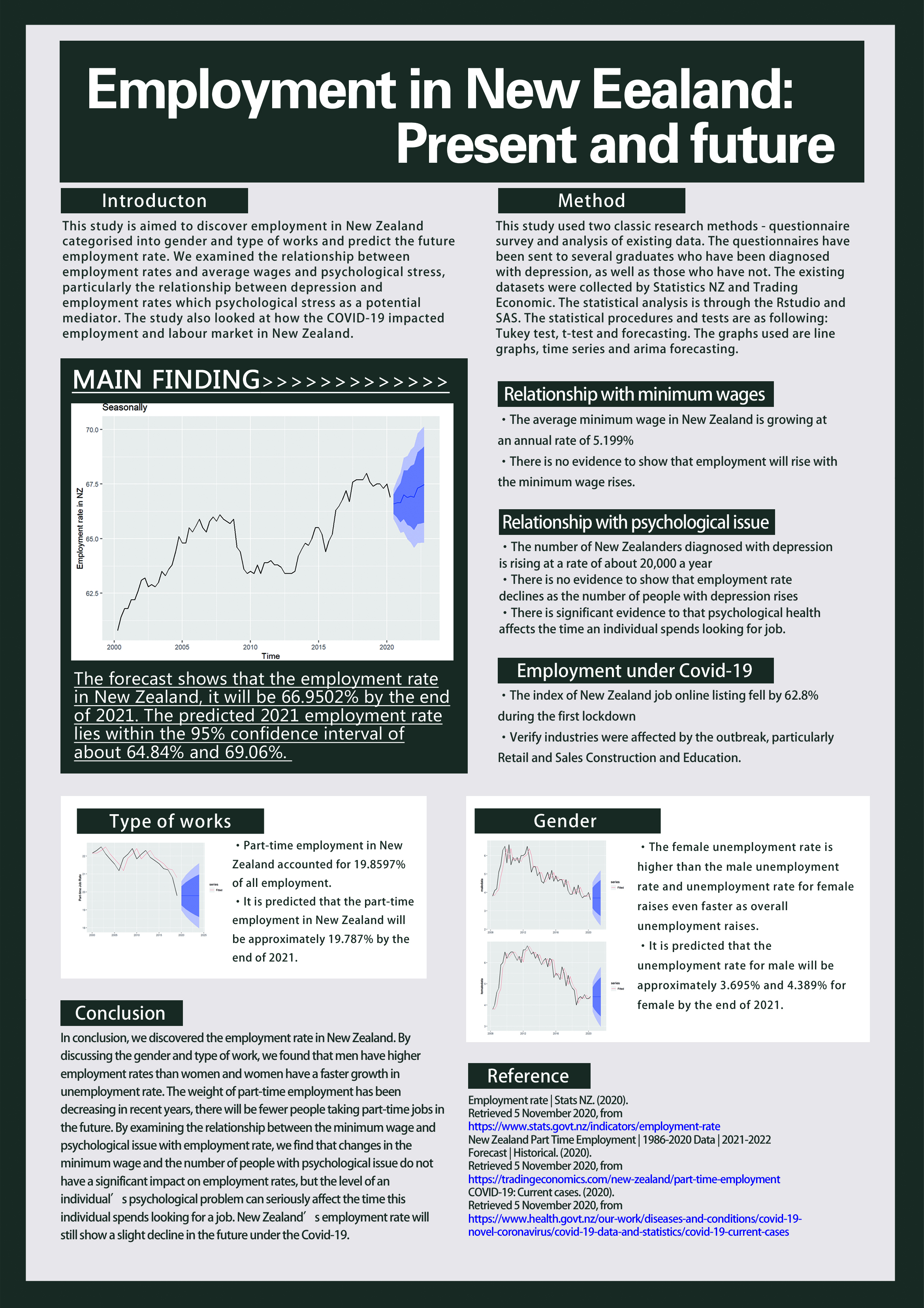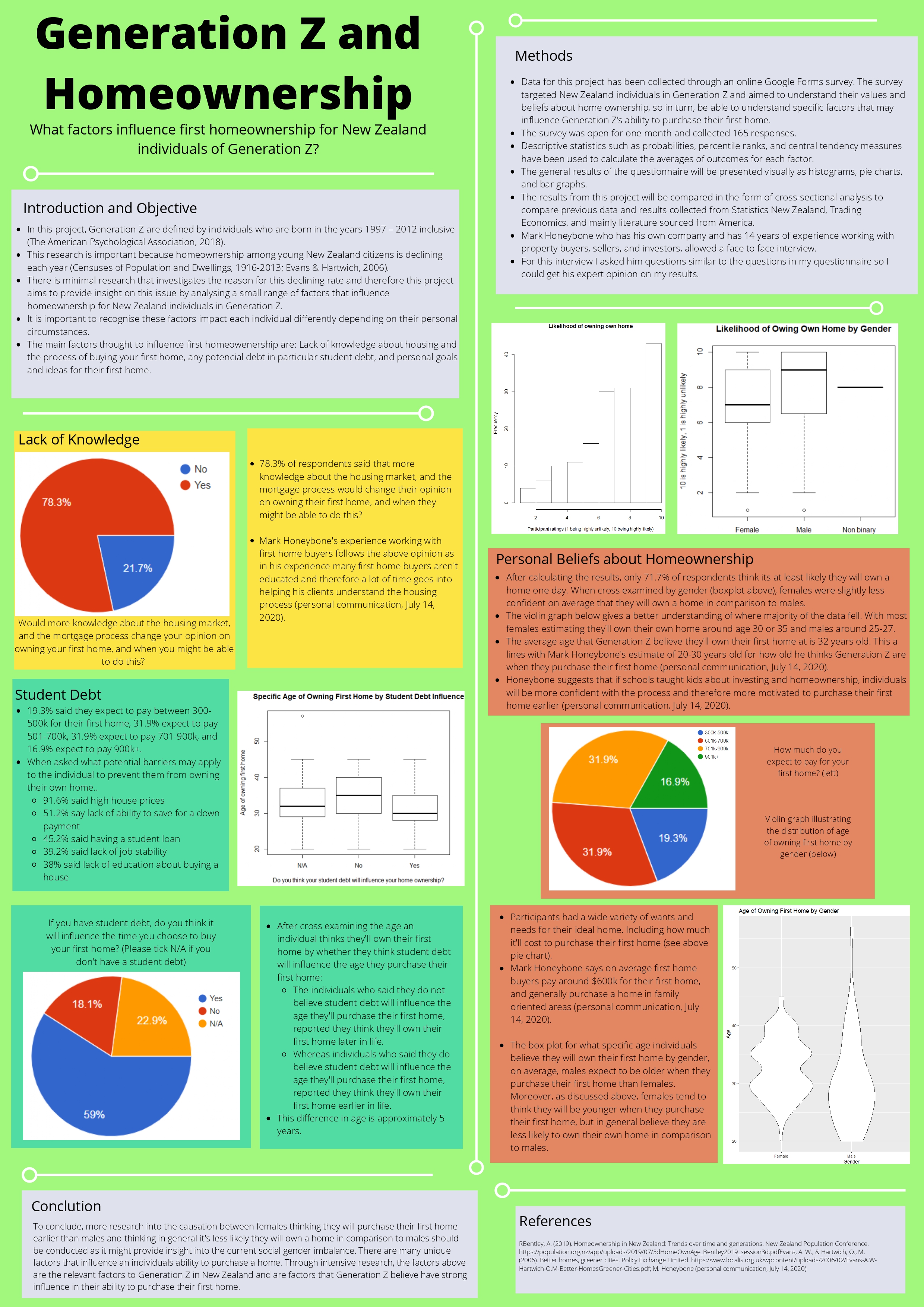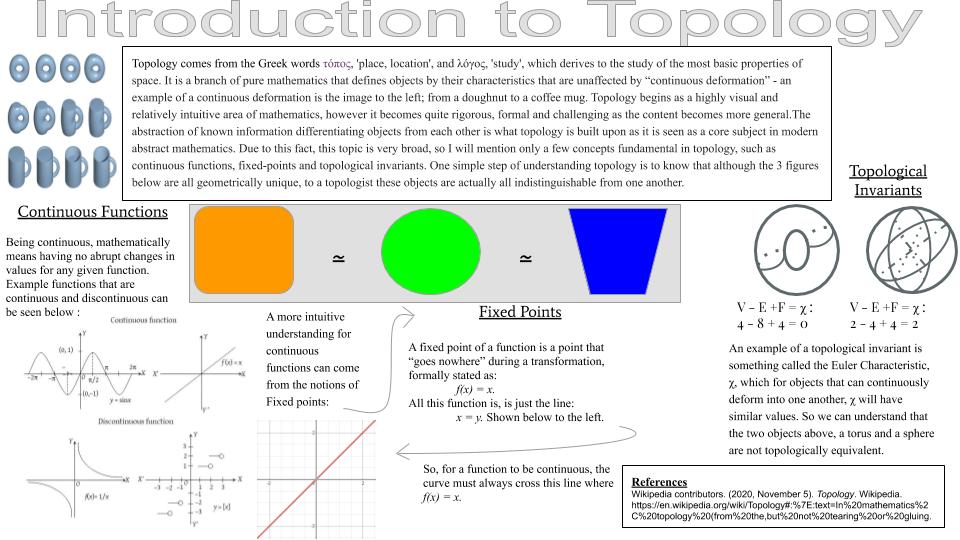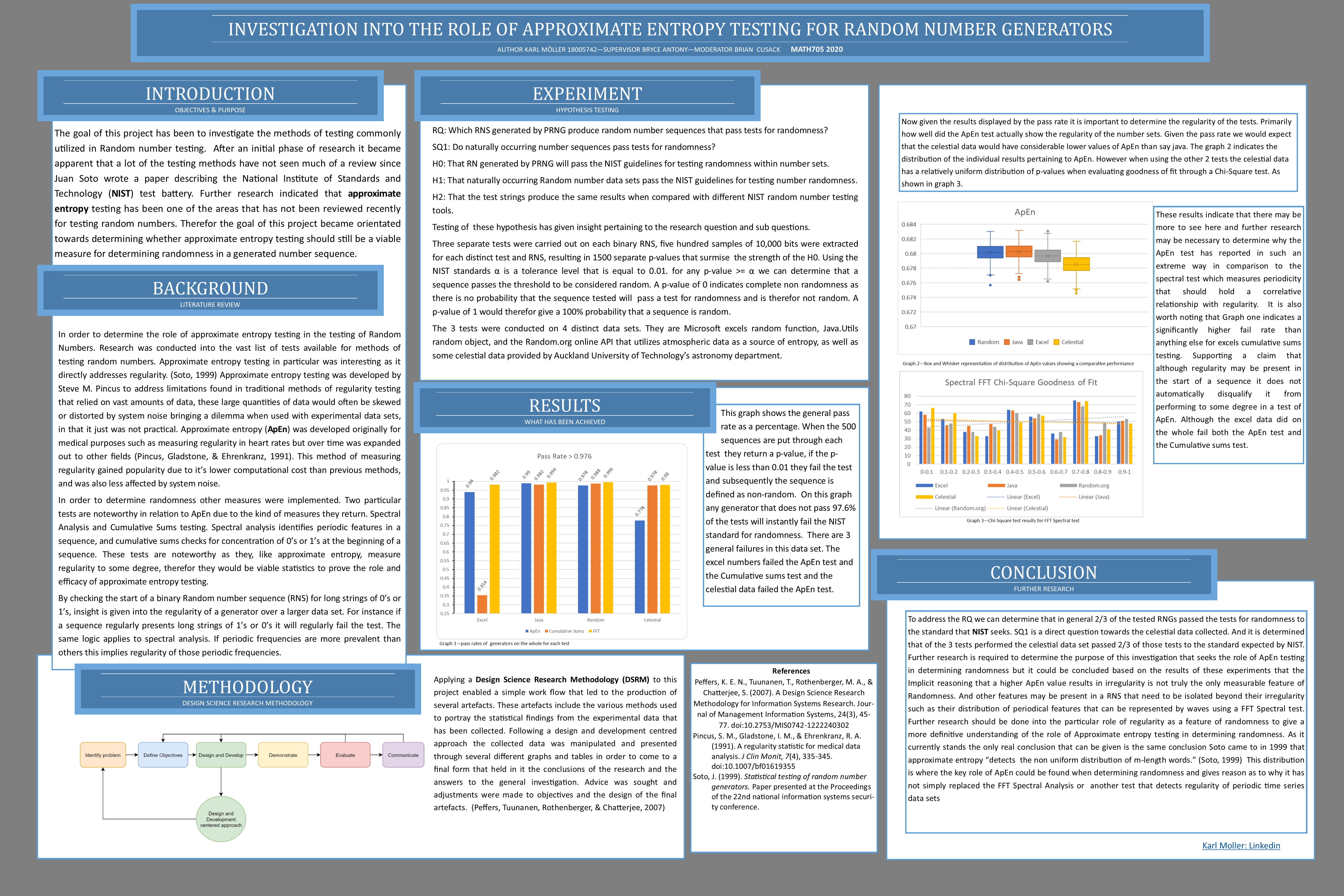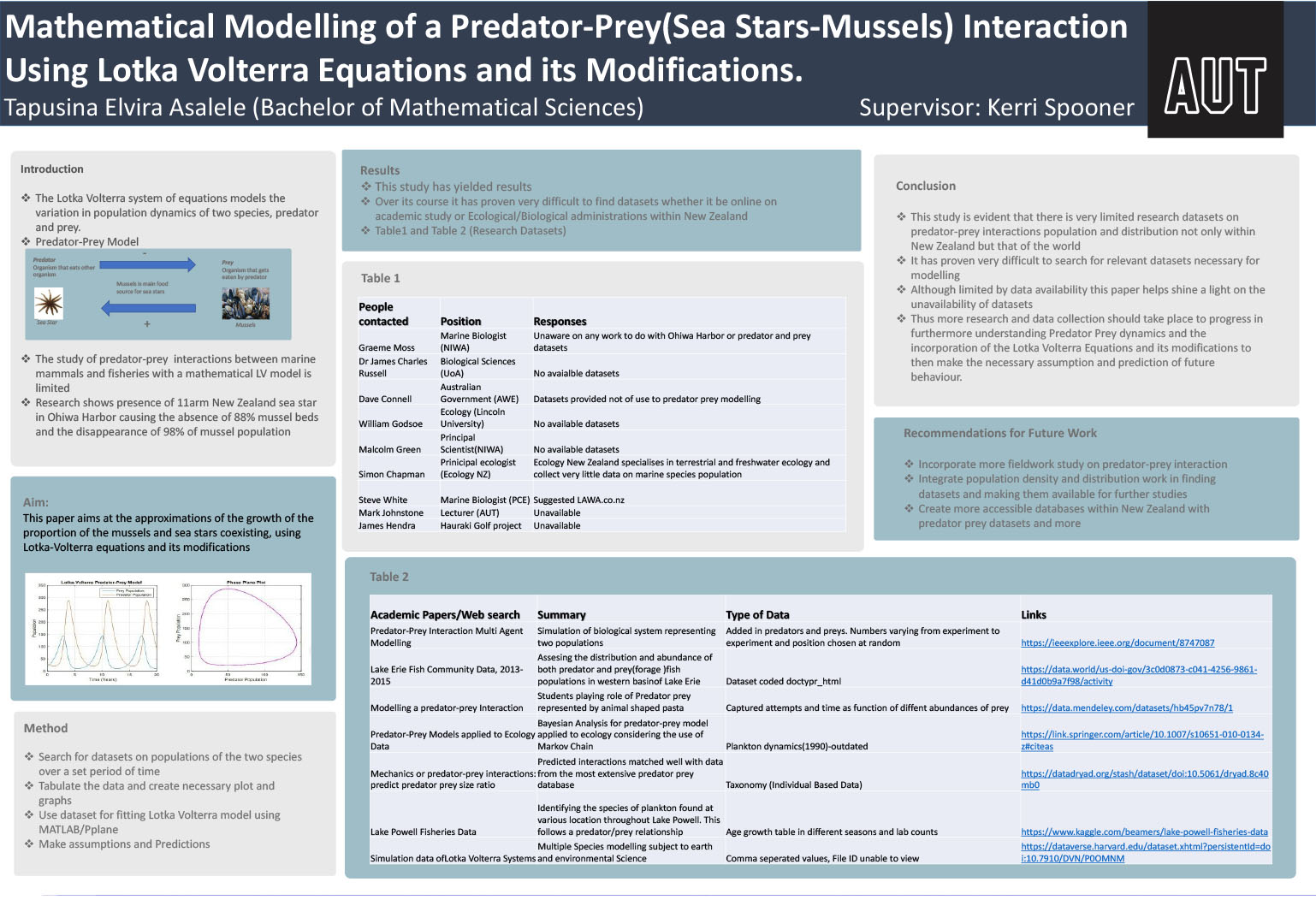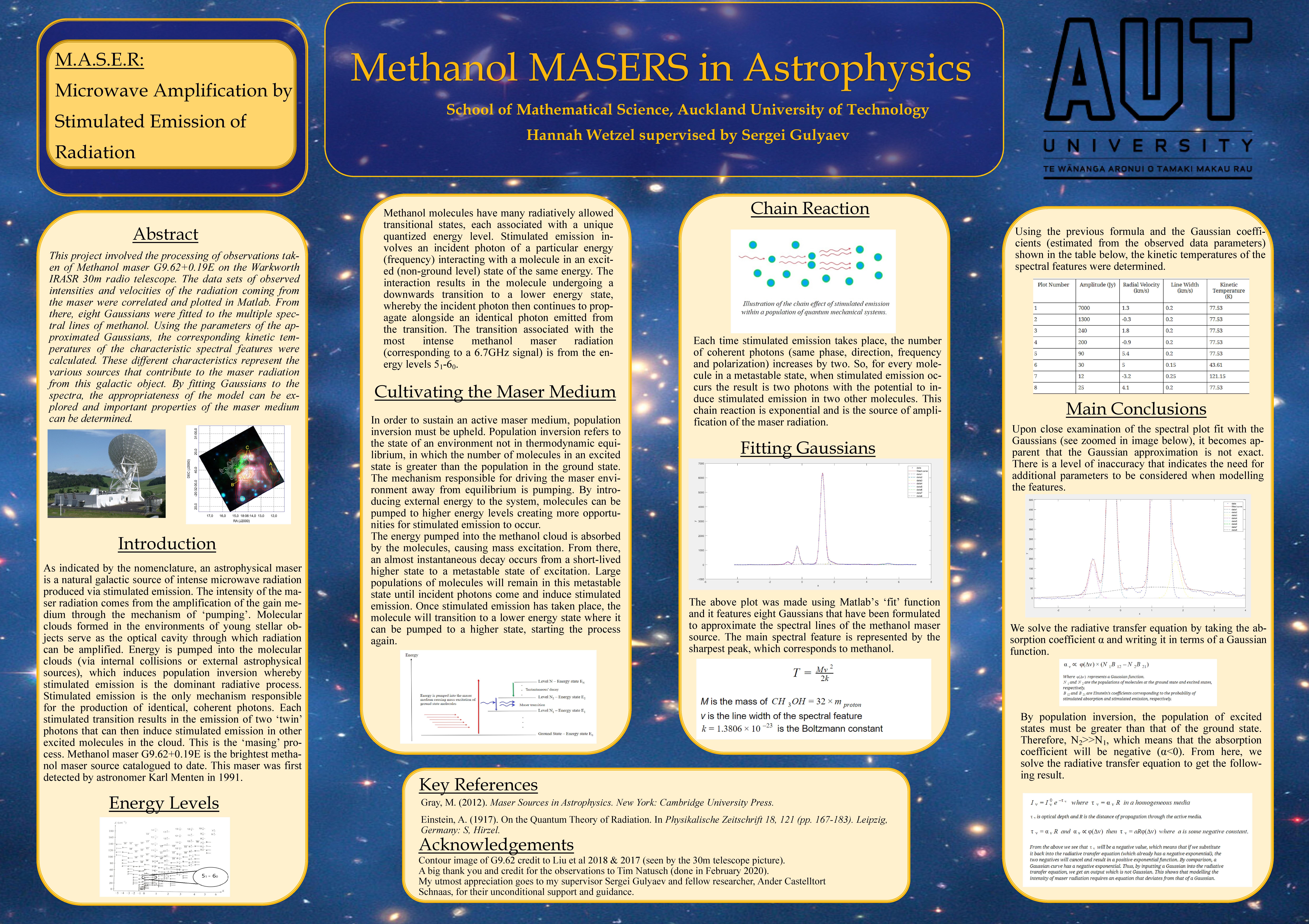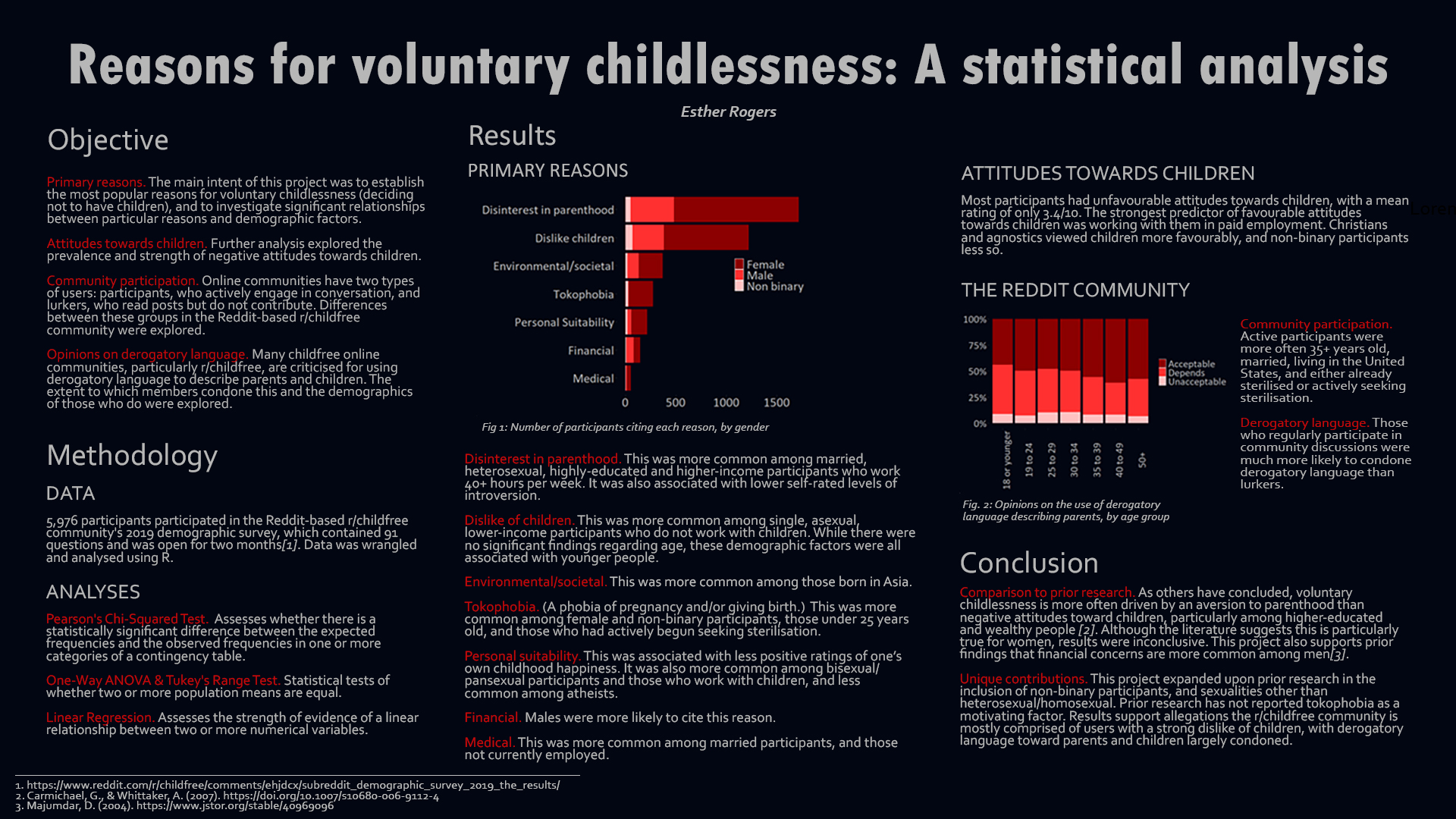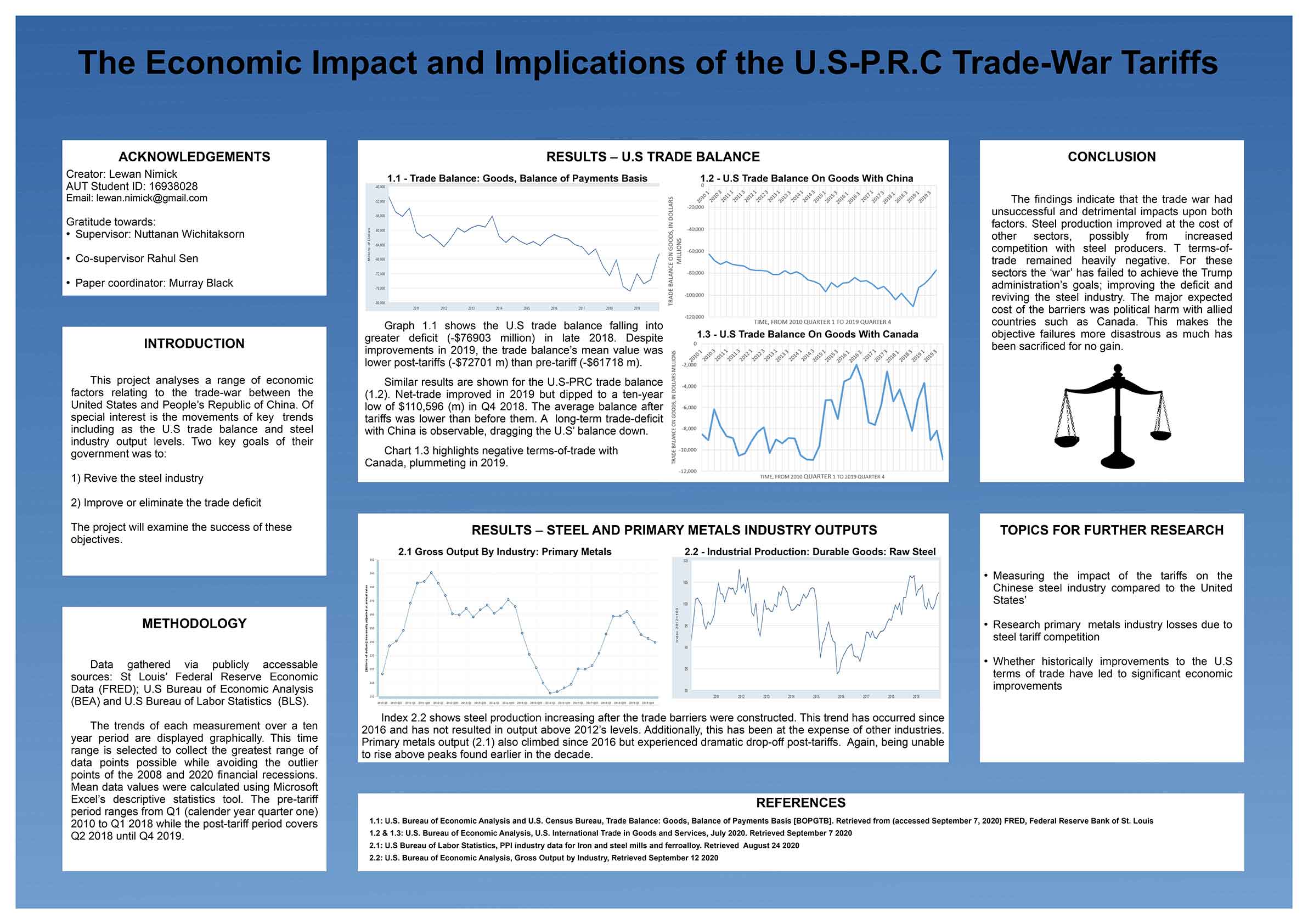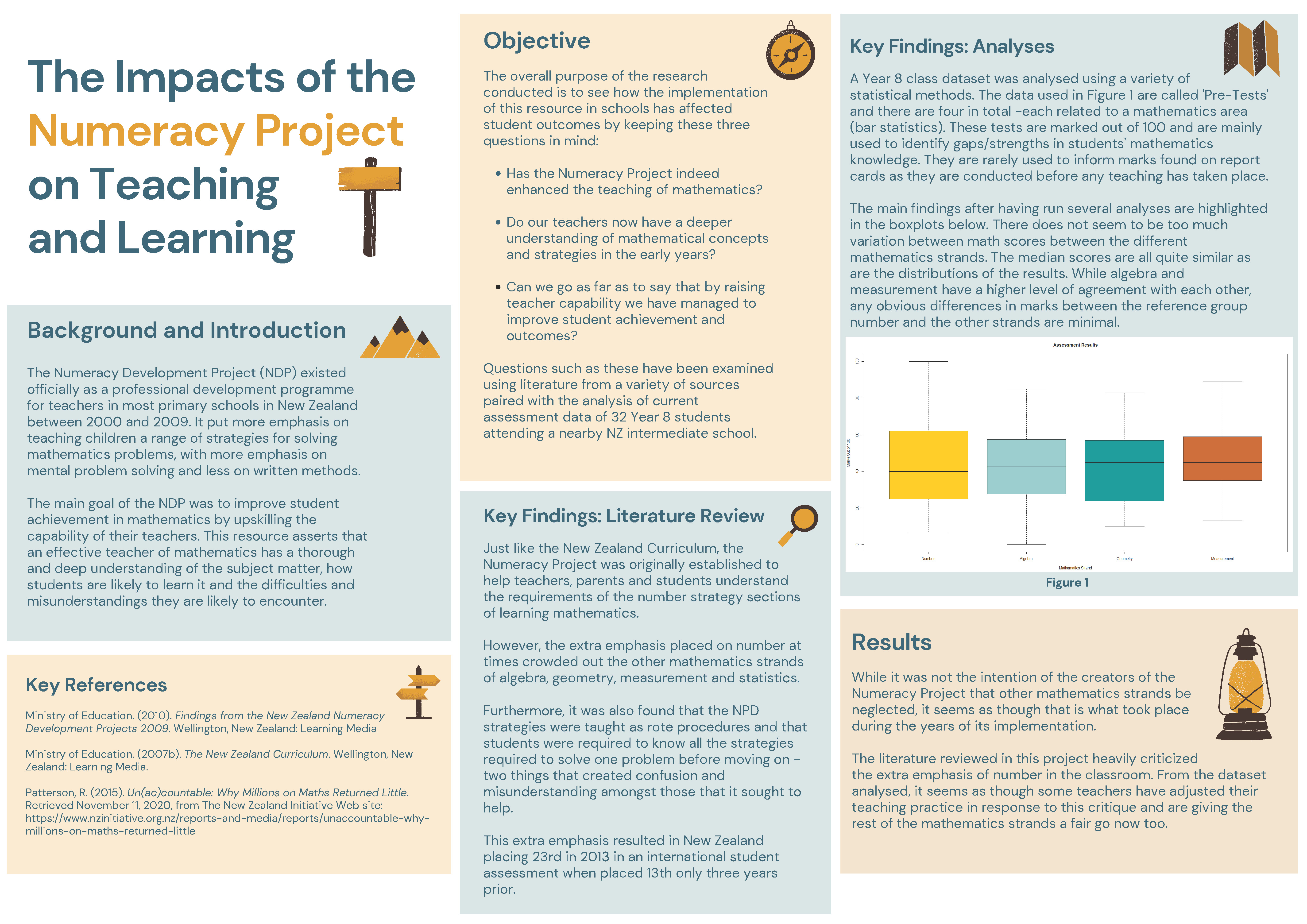Student showcase from Bachelor of Mathematical Sciences and Bachelor of Science 2020
Bachelor of Mathematical Sciences and Bachelor of Science students work on a poster in the subject areas of either astronomy, applied mathematics, computer science or analytics as part of their overall research project, preparing them for a lifelong career in their chosen field.
We hope you enjoy the showcase and we encourage you to connect with our students through their LinkedIn profiles.
Methanol Masers are astronomical radio sources typically found in star-forming regions such as ultra-compact H II regions in molecular clouds. G9.62+0.19 is a well-observed methanol maser in the Milky Way Galaxy and is a very bright radio-emission source (approximately 5000 Jy, at approximately 6.7 GHz). Its emission spectrum is dominated by a few very strong narrow peaks associated with transitions between allowed rotational energy levels of the Methanol (CH3OH) molecule. A time sequence of observations and measurements has revealed changes in both frequency and magnitude of these spectral emission peaks.
The principle objective of this research project is to conduct observations of the methanol maser G9.62+0.19 and obtain data such that the underlying mechanism which influence frequency shifts can be understood. Initially, the shift in frequency is expected to be directly caused by the relative motion along the line of sight between the Earth and the source (this being primarily the diurnal rotational motion of the Earth coupled with its orbital motion about the Sun). Such motion would cause the radio waves, travelling from the source to Earth, to be compressed/stretched by the Doppler Effect.
We propose to test this hypothesis by observing the source periodically over the course of the following months, and record and compare its spectra. When the Earth reaches a ‘peak’ in its orbit (closest point on Earth’s orbit to the source) we expect to obtain a maximum shift in frequency. Thereafter, as the Earth moves away from the source, the radio waves will be stretched and max frequency will decrease (red shift). MATLAB and its Curve Fitting Tool were used to process the maser’s data and fit Gaussian curves to model the main features. The centre points of the prominent peaks corresponding to the methanol (CH3OH) transition were determined and extracted to establish a relative point of reference between the shifted frequencies of each observation. A frequency vs time plot, referred to as a velocity plot, was then constructed from which the change in frequency information was used to substitute into the Doppler equation and prove that the Earth is truly in motion. Thus, providing a different perspective with independent evidence that supports the controversial views of Galileo Galilei in the 17th Century.
Student(s)
- Ander Castelltort Schnaas
Bachelor of Science
Supervisor
- Tim Natusch
As we all know, COVID-19 has become a series of the global issue now. Under the influence of this epidemic, New Zealand's economy has experienced a decline. Simultaneously, people are very concerned about food and service prices to better plan for allocating daily expenses for their families. This project will be looking at the Consumer Price Index and analyze the price change and trend for the past ten years of food and house in NZ. For example, some interesting questions will be discussed, such as the relationship between food price and inflation rate, housing price and city population, Etc. Through the research and discussion of its factors, the reasons behind the price change will be discovered, and gain a deeper understanding of New Zealand’s overall economy and living standards.
Student(s)
- Huixuan Chen
Bachelor of Mathematical Sciences
Supervisor
- Patricio Andres
- Maturana Russel
This study is aimed to discover employment in New Zealand categorised into gender and type of works and predict the future employment rate. We examined the relationship between employment rates and average wages and psychological stress, particularly the relationship between depression and employment rates which psychological stress as a potential mediator. The study also looked at how the COVID-19 impacted employment and labour market in New Zealand.
Student(s)
- Yingyue Kang
Bachelor of Mathematical Sciences
Supervisor
- Murray Black
The purpose is to investigating what factors influence homeowenership for New Zealand individuals of Generation Z in order to give individuals of Generation Z an indication of potencial barriers and factors to consider when thinking about buying their first home. With this knowledge individuals can plan ther goals and future easier by understanding how they may be able to hande the influencing factors. These factors are lack of knowledge about the process of purchasing a home, student debt, and an individuals personal beliefs about homeownership. I have used R Studio to calculate my statistics.
Student(s)
- Jamie Harrison
Bachelor of Mathematical Sciences
Supervisor
- Murray Black
This project has been about exposing myself to the world of pure mathematics and in particular, Topology. Topology seeks to understand objects by their position in space and the attributes that are in a sense 'immutable'.
Developing this abstract understanding of what are the defining factors distinguishing a pretzel to doughnut, by the amount of holes each object has gives rise that these two objects are topologically inequivalent. And knowing that topologically it is allowed that a transformation between a sphere and cube is done by a continuous transformation, meaning that we can say that a sphere is topologically equivalent or homeomorphic to a cube.
This notion of an object being homeomorphic to one another can generalise to all spaces, so we can see that a circle and any loop in 2-space is homeomorphic to square or triangle. Topology seeks to understand how “close” objects or points are by defining an idea of distance between points. An example of a distance function would be similar to pythagoras theorem. As the function measures the distance between two points by the square root of the sum of their x and y-positions squared.
The notion of open sets are also a major role in Topology. A metric space is a set with a metric on the set, and the metric is a function that defines a concept of distance between two members in a set. A metric must satisfy some properties and a metric on a space induces topological properties like open and closed sets which leads to the study of the more abstract topological spaces. Being able to generalise differences between objects to their most fundamental nature is what topology strives for and once all the details are out of the way we can focus only on the properties that are invariantly intrinsic to the object and their natural disposition in space they create.
Student(s)
- Hira Pulham
Bachelor of Mathematical Sciences
Supervisor
- Michael Lockyer
An investigation into common NIST Tests used for testing and determining the quality of RNG’s. an indepth analysis of the role Approxiamte entropy plays with regards to cumulative sums testing and FFT Spectral analysis, including the conducting of experiments to provide results to advise the investigations conclusion.
Mathematics of ecology deals with the study of population changes in space and time, i.e. predator-prey interaction. This study looks at a particular case of such an exchange where there are two species, predator, which in this case is sea stars and prey(mussels). Lotka Volterra is the composition of a pair of differential equations that models predator-prey dynamics in its simplest case. This course aims at the approximations of the growth of the proportion of the two species, using Lotka-Volterra equations and its modifications, however during the research it was evident that there was a lack of information online about datasets which will show in results and furthermore be discussed in the Conclusion.
Student(s)
- Tapusina Asalele
Bachelor of Mathematical Sciences
Supervisor
- Kerri Spooner
Mentor
- Murray Black
MASER being an acronym for “Microwave Amplification by Stimulated Emission of Radiation.” The bulk of the project covers the mechanics of molecular maser clouds and the nature of their observed radiative spectra. In particular, the spectral features of the Class II methanol maser, G9.62+0.19E, were analysed such that conclusions could be made about the masing environment. The project involved processing observations taken of G9.62+0.19E on the Warkworth IRASR 30m radio telescope. The data sets of observed intensities and velocities of the radiation coming from the maser were correlated and plotted in Matlab. From there, eight Gaussians were fitted to the multiple spectral lines of methanol. Using the parameters of the approximated Gaussians, the corresponding kinetic temperatures of the characteristic spectral features were calculated. These different characteristics represent the various sources that contribute to the maser radiation from this galactic object. By fitting Gaussians to the spectra, the appropriateness of the model can be explored and important properties of the maser medium could be determined. Upon close examination of the spectral line models, obvious discrepancies can be seen between the actual observed data points and the approximated curve. Using the radiative transfer equation, it can be shown that a Gaussian input does not result in a Gaussian-like output. Therefore, the model validity can be visually and theoretically denounced.
Student(s)
- Hannah Mae Wetzel
Bachelor of Science
Supervisor
- Sergei Gulyaev
Statistical analyses were performed on microdata from a 2019 demographic survey of the users of online discussion forum Reddit’s r/childfree community. Relationships between participants’ primary reason for choosing not to have children and other variables of interest were investigated, including demographic factors, attitudes toward children, and personal/lifestyle factors.
This project analyses a range of economic factors relating to the trade-war between the United States and People’s Republic of China. Of special interest is the movements of key trends including as the U.S trade balance and steel industry output levels. The project will examine the success of the ‘war’ in improving these categories.
The main goal of the Numeracy Development Project was to improve student achievement in mathematics by upskilling the capability of their teachers and existed officially as a professional development programme for teachers in most primary schools in New Zealand between 2000 and 2009. The overall purpose of the research conducted is to see how the implementation of the Numeracy Development Project in schools affected student outcomes and achievement.
Partnering with industry
AUT is proud of its strong industry links and we are always looking for new opportunities to partner with organisations. For further information or if you are interested in submitting a project for our student to work on in the future please contact Catherine Sweatman, Programme Leader: catherine.sweatman@aut.ac.nz
Student works from other areas
AUT’s degrees in engineering, computer and mathematical sciences are an opportunity for our students to play a key role in New Zealand’s technological, social and economic development.
We are proud and excited to display the work of our final year students and we invite you to celebrate with us their fantastic achievements.
